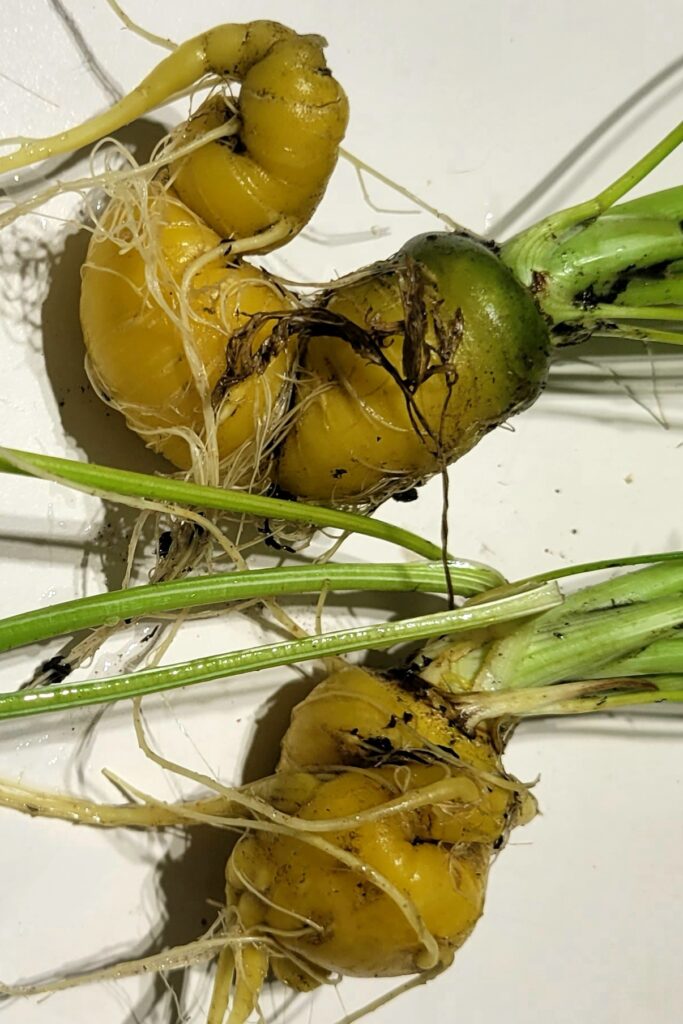
Why do my carrots look like this…
Carrots do have a way of surprising us with how they look when they come out of the ground, don’t they? The good news is that the structure of carrots (a vegetable that’s usually grown for eating its roots) can tell us a lot about the conditions they were grown in. Carrots can be misshapen for a variety of reasons, as this past Toronto Master Gardeners post explains:
“There are number of reasons that carrots can become misshapen, including spacing, soil issues, nutrient issues and diseases or pests. If carrots are intertwined, they have likely been grown too close together. To avoid this issue, thin plants out to at least an inch apart after the stalks are around three inches high to allow for adequate space for the maturing roots. If the carrots are stunted or growing split roots, the problem may be soil that has too many rocks, hard clay lumps or may be too compact. Carrots prefer loose, slightly sandy soil. Next year make sure to work the soil only after it is dry, and to remove rocks and break up large lumps. You can also amend the soil with organic matter to improve its texture. Multiple small root branches and hairs may be caused by too much nitrogen. Fertilizing with fresh manure or adding nitrogen rich fertilizers immediately before planting will increase the nitrogen levels in the soil. Consider applying fresh manure in the late fall, or use well composted manure in the spring. You may also want to rotate your plantings with another crop that thrives on higher nitrogen levels, such as broccoli, corn or lettuce.”
I would suggest reflecting back on the conditions your carrots were grown in.
- The hairy roots on these carrots suggest that there was too much nitrogen in your soil. Did you add nitrogen-heavy fertilizer or manure to the soil before/while they were growing?
- The stunted nature of these carrots suggests that they may be growing in heavy and/or compacted soil. Examine the condition of your soil – you can amend soil in the ground and/or in containers so it’s lighter and easier for root vegetables to grow in. The Toronto Master Gardeners Soil Fertility guide has advice on how to amend heavy clay soils to increase pore space in the soil so that air/water can appropriately reach roots, and how to avoid soil compaction. The Toronto Master Gardeners Growing Urban Vegetables guide has recommendations for what kind of soil to use in containers.
You still have time to amend your soil and plant a Fall crop of carrots. Count back from the Toronto average frost date (around October 13th) based on the number of days to maturity (on your carrot seed packet) to determine when to plant your next round of carrot seeds. Best of luck with your next carrot growing experiment!

